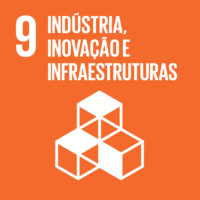Ciência_Iscte
Publicações
Descrição Detalhada da Publicação
A discretized linear elastic model for cloth buckling and drape
Título Revista
Textile Research Journal
Ano (publicação definitiva)
2000
Língua
Inglês
País
Reino Unido
Mais Informação
Web of Science®
Scopus
Google Scholar
Esta publicação não está indexada no Google Scholar
Esta publicação não está indexada no Overton
Abstract/Resumo
We present a computational model for plain woven fabrics. The model is able to represent known elastic behavior in deformation such as planar extension, shearing and out-of-plane bending, drape, and buckling. Buckling behavior is present both in shear and compression. The cloth is assumed to be an orthotropic linear elastic continuum, discretized by a mesh of triangles. Each triangle links three particles and is able to measure the stress and strain of the underlying medium. For the planar deformation, we assume the hypothesis of the plate under plane stress from the classical theory of elasticity. For the out-of-plane deformation, we allow linear elasticity and nonlinear displacement in bending, by modeling curvature interactions along the edges of neighboring triangles. To formulate the dynamic equilibrium of the mechanical system, we use Newton's second law. Nonlinear elastic material behavior is made possible by piecewise linear approximation of measured data. Visual results of cloth under various deformation conditions are presented—in tensile, draping, and buckling situations.
Agradecimentos/Acknowledgements
--
Palavras-chave
Plain woven fabrics,Cloth model,Nonlinear elasticity,Extension,Shearing,Drape,Buckling,3D model
Classificação Fields of Science and Technology
- Ciências da Computação e da Informação - Ciências Naturais
- Engenharia Eletrotécnica, Eletrónica e Informática - Engenharia e Tecnologia
- Engenharia dos Materiais - Engenharia e Tecnologia
Contribuições para os Objetivos do Desenvolvimento Sustentável das Nações Unidas
Com o objetivo de aumentar a investigação direcionada para o cumprimento dos Objetivos do Desenvolvimento Sustentável para 2030 das Nações Unidas, é disponibilizada no Ciência_Iscte a possibilidade de associação, quando aplicável, dos artigos científicos aos Objetivos do Desenvolvimento Sustentável. Estes são os Objetivos do Desenvolvimento Sustentável identificados pelo(s) autor(es) para esta publicação. Para uma informação detalhada dos Objetivos do Desenvolvimento Sustentável, clique aqui.

 English
English


